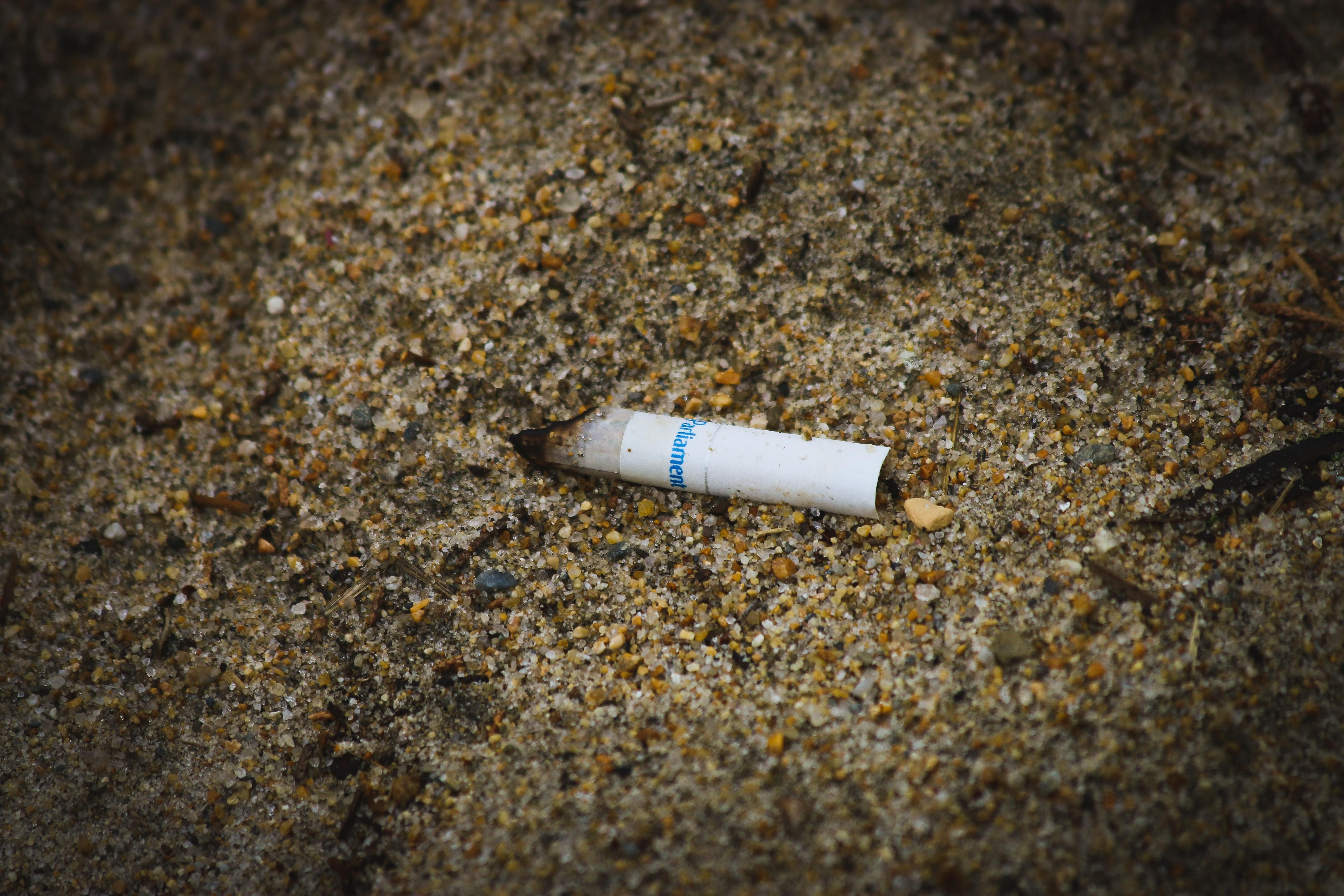
For decades, smoking has been a common, if not essential, activity for people across the globe. It was so popular that it has necessitated the placement of ashtrays inside most buildings, along sidewalks, and even inside vehicles. Now, many countries have moved away from the normalcy of indoor smoking by posting non-smoking signs indoors, prohibiting smoking within a certain distance of buildings, and providing designated smoking areas. Along with this, the removal of many ashtrays has been implemented in order to discourage smoking altogether. With more people smoking outdoors and no place to dispose of cigarette butts, these leftover remains of cigarettes are often discarded on the ground. Since it is such a small fragment, it may not appear to be littering, but many people are unaware of the impact that cigarette butts have on the environment (Cigarette Litter, 2022).
In his podcast Speak Up For The Ocean Blue, Andrew Lewin discusses how cigarette butts are polluting the ocean. When looking at a cigarette, it appears to be made out of paper or cotton, leading people to believe it is biodegradable in some way, therefore harmless to discard into the environment. However, cigarettes are actually considered to be a form of microplastic pollution, as their filters are lined with microplastic fibers. These fibers then break down and disperse in water, causing them to spread throughout the ocean. Not only do cigarette butts contain microplastics, but they also contain toxic substances such as nicotine, carcinogenic tar, and polycyclic aromatic hydrocarbons, or PAH’s, that seep out when in the water. This causes toxic chemical pollution in waterways as well. In fact, 1 cigarette can pollute 40 liters of water alone (Lewin, 2022). These chemicals and microplastics cause damage to marine life when ingested and can reduce their chances of survival.
It is no surprise that 40% of the waste in the ocean is from cigarette butts; it is easy to toss a cigarette butt into the sand, but these quickly begin to accumulate on beaches and are easily swept into waterways (Lewin, 2022). In 2017, Ocean Conservancy International Beach Cleanup volunteers collected over 1.8 million cigarette butts (Cigarette Litter, 2022). While penalties for littering do exist, they are often not enforced, allowing this issue to persist. Lewin (2022) stresses the need for more policies regarding the disposal of cigarette butts to prevent them from cycling through the environment and causing further damage. It is also important to begin educating the public about cigarette butt pollution and provide people with more environmentally-friendly disposal options. For example, on the Keep Massachusetts Beautiful website, a helpful suggestion is to utilize pocket ashtrays that will hold cigarette butts until they can be disposed of properly (Cigarette Litter, 2022). At Seaside Sustainability, we believe in environmental protection through action and education, and education is the first step to reduce the harmful effects of cigarette butts on the marine environment.
References
Cigarette Litter prevention programs in Massachusetts. Keep Massachusetts Beautiful. (2022). Retrieved April 12, 2022, from https://keepmassbeautiful.org/what-we-do/litter-prevention-cleanup/cigarette-litter-prevention.html
Lewin, A. (2022, April 11). This is why cigarette butts are polluting the ocean. Speak Up For The Ocean Blue. episode, https://www.speakupforblue.com/show/speak-up-for-the-ocean-blue/this-is-why-cigarette-butts-are-polluting-the-ocean/.
Article courtesy of Seaside Sustainability


